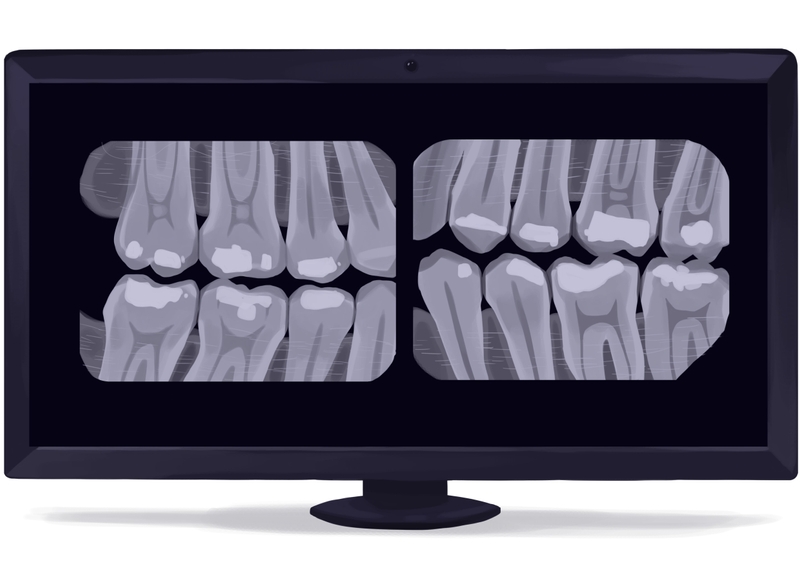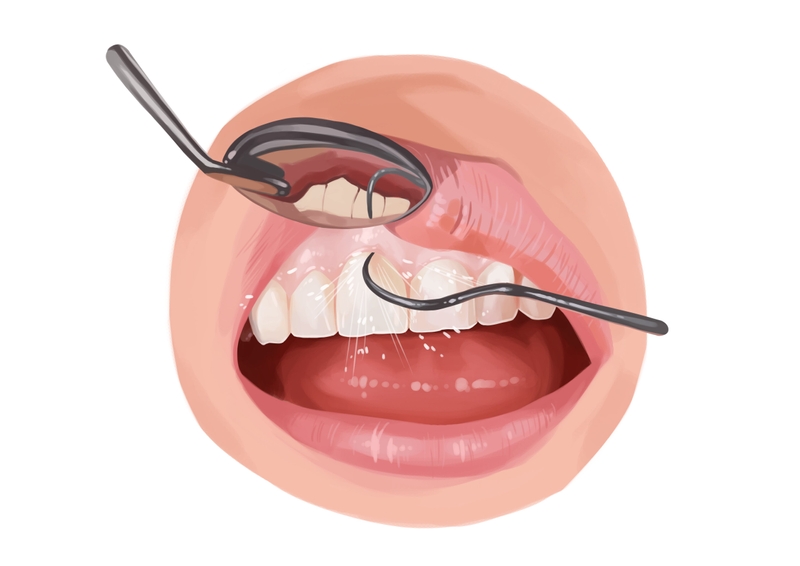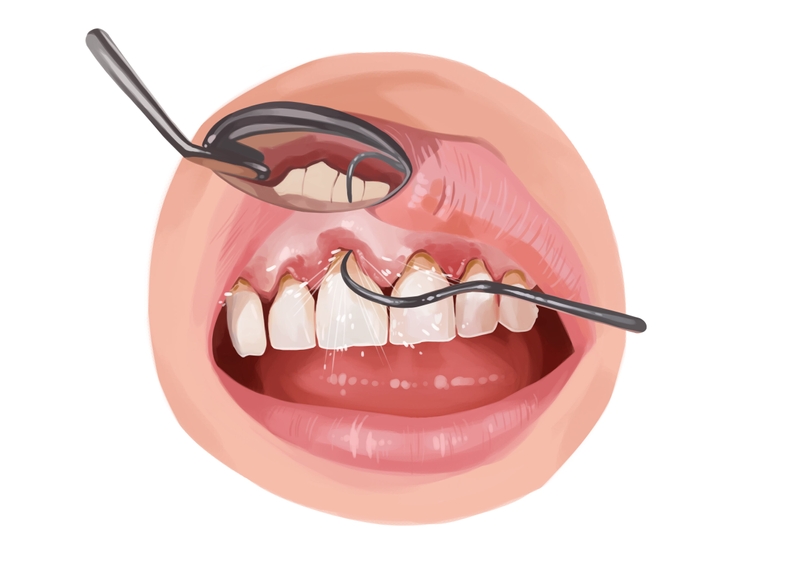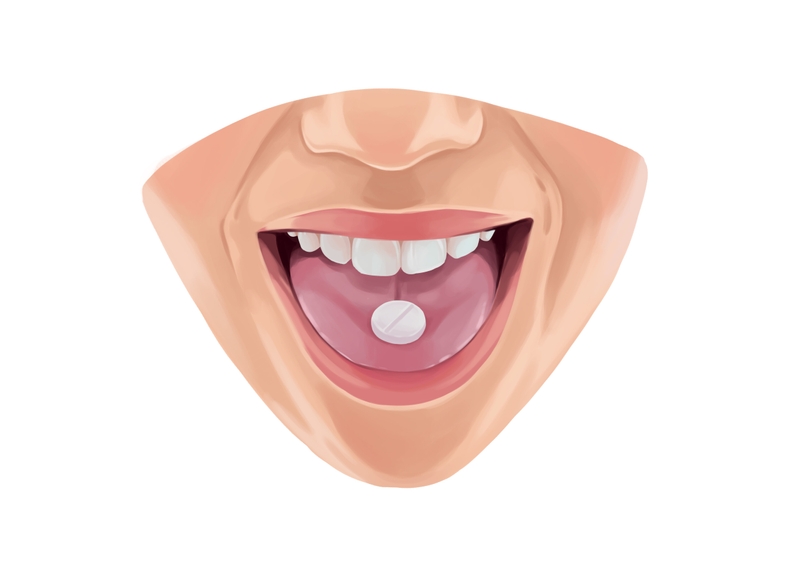- Scaling and root planing (SRP) aim to remove bacteria and infection from the soft tissues around the gums.
- SRP helps to reduce inflammation and increased tooth support.
- Preventive treatment is recommended 1-2 times a year. If you have periodontal disease, you can use SRP therapeutically.
Need to make an urgent dentist appointment? Use Authority Dental to find dentists open today near you. Your best smile is within reach.
Do you need scaling and root planing treatment? Here's everything you need to know.
Signs you need deep teeth cleaning

Picture by Authority Dental under CC 2.0 license
Periodontal scaling and root planing is necessary if your probing session suggests you might have gum disease. It is not a routine procedure. Instead, preventative treatment such as a prophylaxis is recommended 1-2 times per year.
If you have not been to the dentist in a while, the calculus and plaque which would normally be removed migrate down below the gumline. The bacteria and their by-products gather around the tooth, infecting the gums and causing bone loss.
Symptoms you can look for yourself include:
bad breath or taste,
gums bleeding easily,
red, swollen, or tender gums,
gums pulled away from the teeth,
loose or separating teeth,
changes in the bite, and
partial dentures no longer fitting properly.
Scaling and root planing types
A deep dental cleaning can be preventive or therapeutic, but counter-intuitively, both deal with active periodontal disease. Other methods, commonly used by holistic dentists, include laser treatment.
If your periodontitis has not spread to more than 30% of your mouth, you may get away with preventive or localized SRP. Otherwise, you will be rescheduled for another appointment, after an oral exam. The SRP type is the biggest factor determining the cost of the procedure.
Preventive SRP

Picture by Authority Dental under CC 2.0 license
Scaling and root planing (SRP) is a preventive treatment. This procedure is meant for those with active periodontal disease, and it’s the only one needed to treat it. In more complex cases time-release antibiotics might be injected to fight bacteria for a longer time.
Periodontal disease can be caused by not visiting the dentist for a cleaning regularly. It is recommended you do this at least twice a year.
In terms of dental health, it doesn’t make much of a difference whether you get your teeth done at once, or over a longer period. Long-term effects are comparable. What’s more, not all of your teeth may need SRP.
Therapeutic SRP

Picture by Authority Dental under CC 2.0 license
If the patient displays moderate to severe inflammation on more than 30% of the mouth the SRP is no longer considered “preventive”. Symptoms of such a situation include swollen, bleeding, or inflamed gums.
In such a case the procedure can only be conducted after an oral examination. A dentist must first assess what state the mouth is in. Often, periodontal disease cannot be fully cured, but rather maintained. This means you may have to come in for SRP regularly.
Scaling and root planing procedure
The SRP procedure shouldn’t take more than 2 hours. It all depends on the severity of the problem and what portion of the mouth is being treated.
The process of a deep teeth cleaning may start out very similarly to that of a regular prophylaxis.
Preliminary chat
Any changes in your dental history or new medication should be reported to the dentist. After that, he or she will let you know what is going to happen step by step. An X-ray is likely to take place.
Periodontal charting/probing
The hygienist will use a special tool to measure the depth of your gum pockets. Healthy pockets should not be 4 mm or above.
X-ray
If those pockets do turn out to be concerning, a radiograph will be taken. If it shows significant bone loss or calculus below the gums, scaling and root planing will be performed.
Anesthetic
Some kind of anesthetic will most likely be used. This might be a local injection or a topical gel.
Scaling
A hand-held scaler will be used to manually remove the plaque from the teeth and roots. An ultrasonic tool may be used to aid this process.
Root planing
The dental professional will use a rubbing motion to scrape off roughness from your roots. Those spots are where the bacteria reside.
Application of antibiotics
Time-release antibiotics might be applied to manage the inflammation in the gums. You will be given instructions on how to care for your mouth for the next few days or weeks.
Referral to a periodontist
Scaling and root planing effectiveness depends on patients maintaining or beginning to conduct proper oral hygiene and care.
In very extreme cases surgical treatment might be necessary. The patient is often, but not always, referred to a specialist.
A single deep cleaning procedure might take one to two hours. If the periodontitis has spread over a significant area in your mouth, the procedure might have to be stretched out over several appointments.
After the procedure is complete, you will have to wait four to six weeks before returning for a check-up. There might also be a follow-up appointment with a periodontist if the situation in your mouth does not improve or if your bone needs intervention.
SRP aftercare instructions

Picture by Authority Dental under CC 2.0 license
There are a few things to bear in mind after your scaling and root planing procedure.
Take ibuprofen if you feel sore after the procedure. It also has anti-inflammatory properties, so it can help heal your gums faster. Your mouth will feel numb after the anesthetic, so it’s easy to burn your mouth on hot food. Try to abstain from eating for at least 2 hours.
Use saltwater rinses 2-3 a day for a few days. This will help soothe your mouth. Brush your teeth twice a day with a soft bristled toothbrush. You can also floss the night of the procedure. Use a water flosser if you have one.
You might feel sensitivity to hot and cold temperatures for a few days. Desensitizing toothpaste can help there. Avoid products with “whitening” properties and baking soda, as those can irritate the soft tissues in your mouth.
And lastly, do not smoke for 24-48 hours after your procedure. It can slow down healing significantly.
FAQ
Is periodontal scaling and root planing necessary?
Not for every patient. SRP is required when there is considerable tartar and plaque buildup that cannot be removed during a simple teeth cleaning.
Does scaling and root planing hurt?
Patients describe the procedure as uncomfortable but not painful. Either way, local anesthetic can be administered to minimize any scaling and root planing pain.
What to eat after deep teeth cleaning?
Hard and sticky snacks may cause sensitivity or reduce the effectiveness of scaling and root planing. You best stick to soft foods such as soups and pasta for at least a day. Drink plenty of fluids, ideally water, as well.
Does scaling and root planing carry any risks?
Generally, there aren’t many scaling and root planing risks if the procedure is done correctly. There’s no way teeth fall out after deep cleaning, unless you grossly fail to follow post op instructions. This may also lead to bacteria in the bloodstream, a fever, and tooth sensitivity.
If you suffer from any diseases that make you particularly vulnerable to infection, you may have to take a course of antibiotics. This may start before the procedure.
Henry Hackney, DMD
Periodontal disease has a multitude of causes including, but not limited to, age, tobacco use, oral hygiene, and genetic predisposition.